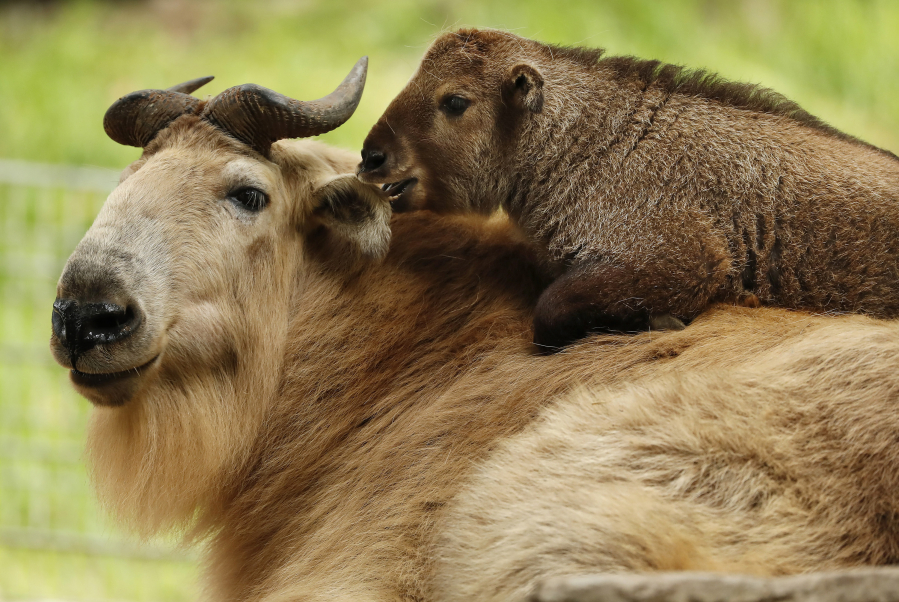SAN DIEGO — One of the San Diego Zoo’s newest and youngest animals is already finding her footing — even on rocky ground.
Last month, the zoo welcomed the birth of a golden takin, a hooved mammal native to the Himalayas. The calf, Mei Ling, is off to a fast start in life, packing on pounds, playing with her parents and learning to scamper across the craggy terrain of her enclosure. She’s the first golden takin born in the Western Hemisphere. And that’s something zookeepers are excited about.
“This is a species most people have never heard of, let alone seen,” said wildlife caretaker Tammy Batson. “I have this theory: People don’t care about what they don’t know about. You can’t. If I can give you a reason to care, then you can make good decisions.”
Mei Ling means “beautiful antelope” in Mandarin, but takins are most closely related to sheep — very, very big sheep. Her father, Zhao, tips the scales at 850 pounds. And her mother, Bona, weighs nearly 500 pounds.
In the wild, these animals traverse the Himalayas searching for bits of bamboo, leaves and vegetation, sometimes traveling as high as 14,000 feet above sea level. It’s a lifestyle they’re well adapted for. Their thick straw-colored coats keep them insulated. And a cavernous nose warms frigid mountain air before it enters their lungs.
There are four takin subspecies, with coats ranging from golden yellow to brown and each living in a different geographic area in the wild. Three can be found at the zoo, which has had a successful breeding program. In 1989, the first Sichuan takin born outside China was born at the zoo. And in 1993, the first Mishmi takin born in the Americas was also born at the zoo.
Takins are classified as a vulnerable species by the International Union for Conservation of Nature. In China, they’re considered a national treasure, just like giant pandas.
That’s why zoo staff were excited last fall to see Zhao mate with Bona and another female, Sue. Keepers monitored the females and noticed that Bona began putting on weight — a telling clue that she might be pregnant.
Seven months later, there was no need for guesswork. On April 14, Bona walked into a small cave in her enclosure, sat down and gave birth to Mei Ling in full view of some very surprised guests.
“Massive crowds,” Batson recalls. “Everyone’s excited. Babies draw attention no matter what species it is. People taking photos. I think that animal was probably online before I saw it!”
Within an hour of her birth, Mei Ling stood up on wobbly legs. A couple of hours later, she started nursing. And a couple of days later, she was leaping from rock to rock, just like she would in the wild.
Mei Ling was born at 16 pounds, but she has already doubled her weight. She’ll eventually reach her mother’s size, though she’s still a little one for now. And that’s why she has the chocolate brown coat of a calf, an adaptation that helps camouflage her.
The zoo’s golden takins are most active at dusk and dawn, spending most of the day resting and digesting.



